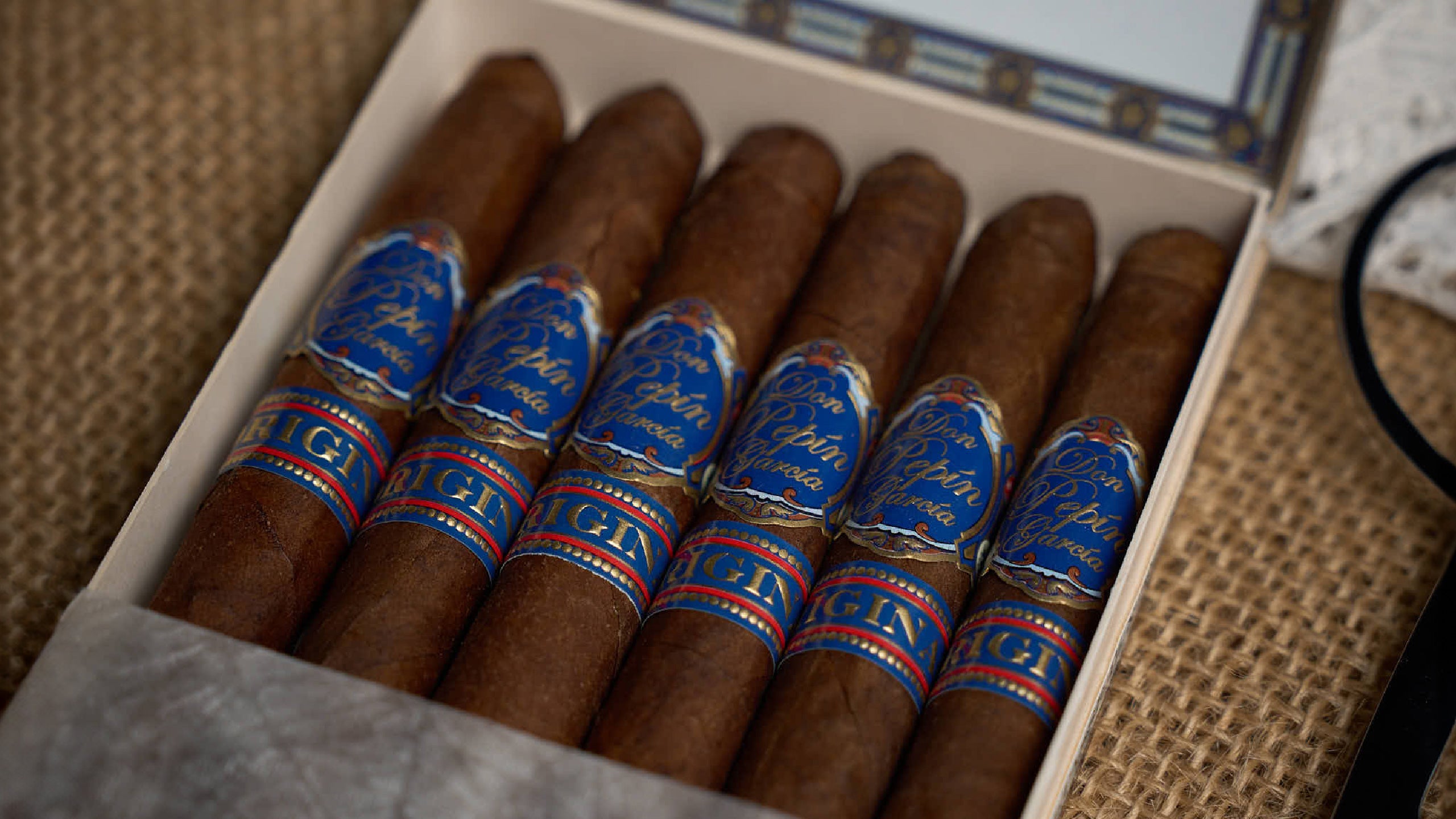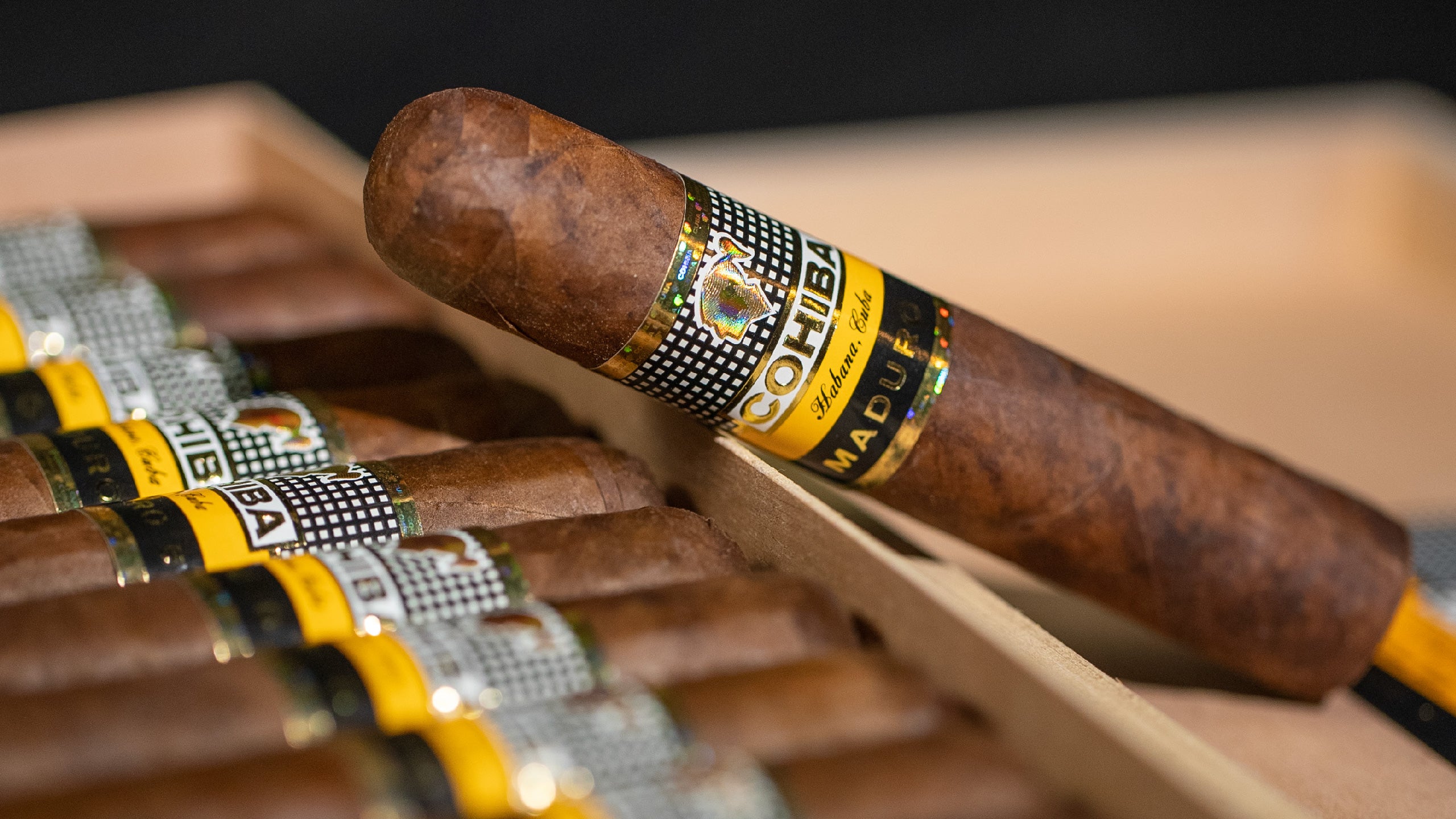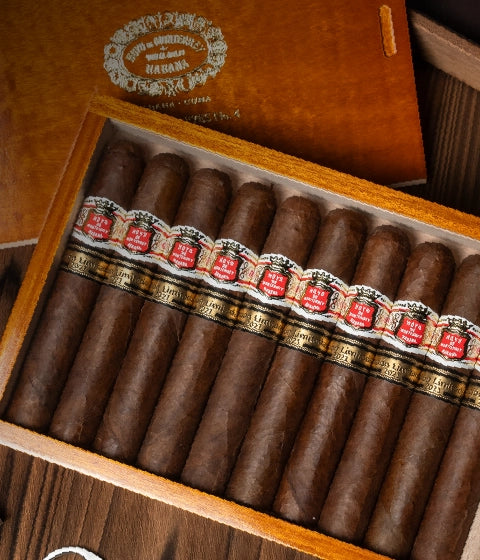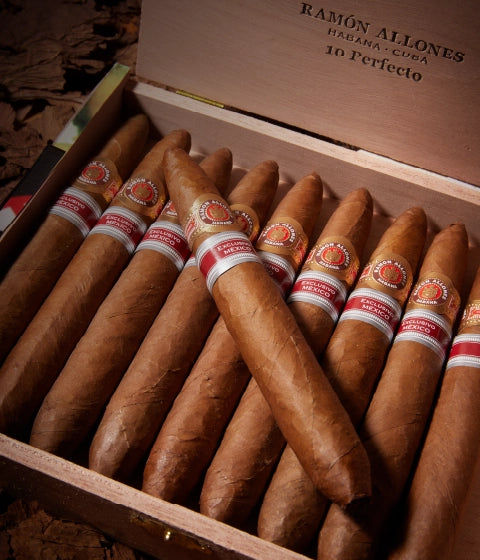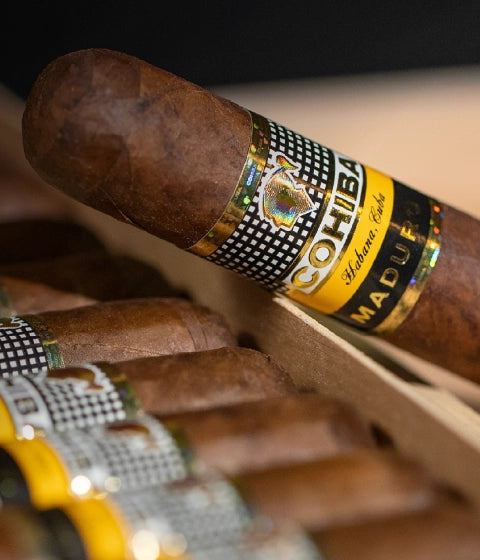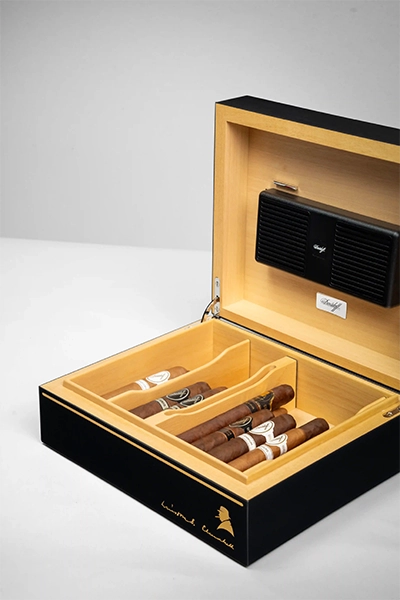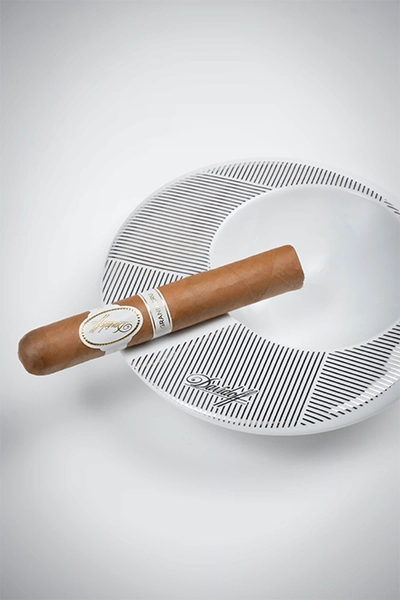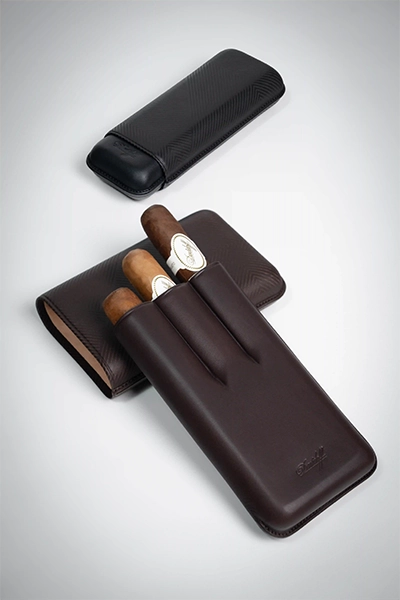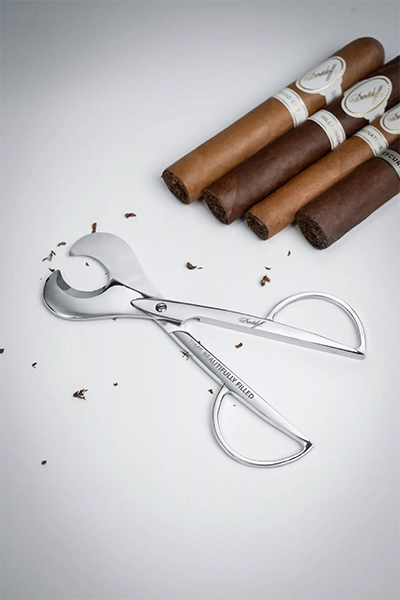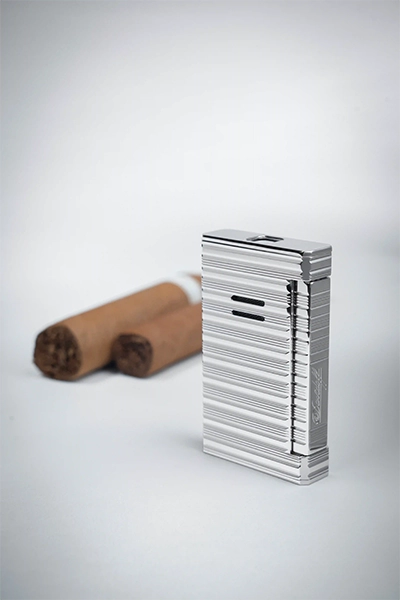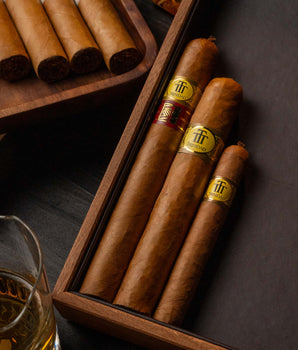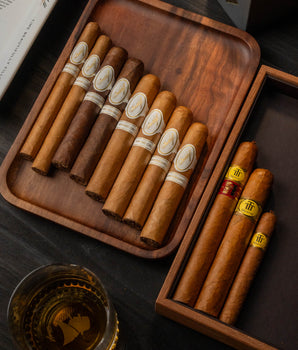TERROIR-ISM
Terroir. It is a French word generally used when discussing wines. It means “region,” but it really refers to the environment where the wine is produced. This includes the soil, the topography and the climate. The same applies to cigars and any agricultural product. Without getting too technical, clearly a cigar with tobacco grown in Cuban soil, long the benchmark for cigar tobacco, is not going to be exactly the same as one with tobacco grown in Nicaraguan soil, though the latter has been favourably compared to Cuba.

Maybe the most interesting study of the influence and differences in terroir was done by Davidoff’s master blender, Hendrik Kelner, a few years ago. Kelner had three cigars rolled from three different production areas in the Dominican Republic. The three cigars were grown from the same seed, San Vincente. Only seco tobacco from the centro fino, the middle position, of the tobacco stalk was used. The tobacco from each region was harvested in the same year and identically fermented. The only difference was terroir.
The cigars were significantly different in strength. Kelner explained to Cigar Journal, “Strength is determined by the percentage of organic material contained in the soil, the more nitrogen [that] enters the plant. Nitrogen is the basis for nicotine and it is nicotine that determines the strength of the tobacco.” For Davidoff, organic material is one of seven elements it records and analyses. Nutritional values in the soil can reveal valuable indications about what the tobacco will taste like.
The higher the calcium to magnesium content in the soil, the sweeter the tobacco is likely to be. Iron also affects taste and especially the aroma. It also contributes some sharpness to the flavour. The higher the iron content, the lower the pH value (pH is a measure of acidity or alkalinity). Battery acid, for example, has a ‘0’ pH value. Very acidy. Lower pH values in tobacco also help account for a long aftertaste. Cuban soil generally has a low pH value. The cigar tasted in this test had a pH value of 5.8 and a middling calcium-to-magnesium rating. Iron was high. The flavour was that of a Davidoff Millennium series.
TOBACCO TYPE/SEED

Of course, the type of tobacco in the cigar is the ultimate flavour determinant. It is important for the tobacco grower to understand which tobacco seed is best suited to the soil. Among the more well-known tobacco types is Piloto Cubano, the seed that was taken from Cuba by cigar makers fleeing the revolution. Piloto seed grows easily, but requires lots of sun and moisture for optimal development. That is why you will see it planted in October in the Dominican Republic, but not in the drier months of January and February. Piloto is robust and full-bodied, with some spice.
THE CIGAR ITSELF
Once you have considered all the agricultural aspects of a cigar’s flavour, there are five main factors involved in how an individual cigar will taste.
Blend
What is the tobacco blend? A cigar maker can tinker with different flavours by combining different tobacco leaves in different quantities within one cigar. Blending can take different forms, but generally occurs within the filler where more leaves can be used. Think of a master blender as your “cigar chef” layering flavours by using different seasonings and ingredients – in this case tobacco – that contribute different flavour characteristics. As with food, the flavours predominantly found in a cigar are salt, sweet, bitter, sour, and umami. The flavour “profile” of a cigar is determined by the layering of these tastes in the three parts of the cigar.
Wrapper
The wrapper, or capa, is considered the most important part of a cigar. The wrapper leaf is thought to contribute up to 90 percent of the flavour of a cigar, but that varies considerably by the type of wrapper and the ring gauge of the individual cigar.
Smoke a cigar without a wrapper on it and you will see how the flavour is affected. I have seen cigar makers test this by lighting up an unfinished cigar that is just binder and filler, then wrapping the tube with different wrapper leaves to see what the blend tastes like. The one they like best is the one they will use to complete the cigar. You can do something similar if you carefully unwrap the bottom half-inch of the wrapper leaf on your cigar and light it. If you want to. But why would you want to?
Binder
The binder leaf is the middle part of a cigar that holds the filler together. This leaf contributes the least to the flavour of a cigar.
Filler
As mentioned, the filler’s percentage of the flavour of a cigar depends on the blend and the ring gauge of the cigar. A fatter cigar will get more of its flavour from the filler.
Ageing
A young cigar can often taste vegetal, like hay or grass. Aging makes a cigar taste softer and rounder. Aging mellows and builds complexity. You know this if you have tasted a cigar right out of new box and then let that box age in your humidor for, say, six months. The aged cigars become much more interesting.
Some other flavour factors….
THE FLAVOUR CHANGES
Clearly, we have all noticed that a cigar changes flavour as you smoke it. This is because the flavours in the tobaccos combine and strengthen as you go along. If your cigar is properly blended and constructed, these changes will be less severe and the flavour more consistent the length of your smoke.
WHY DOES MY CIGAR TASTE BITTER?
A number of factors can make a cigar bitter. If a cigar is dry, the chances of it tasting bitter increase. Keep your cigars properly humidified. Maddeningly, too much humidity can also contribute to a bitter flavour. A possible solution to this is to let your cigar sit outside the humidor in a cigar box overnight to let it dry out. This is called “dry boxing.”
You can make your cigar bitter by puffing too frequently on it. Puff too fast or too often and the cigar will become hotter which can make it taste bitter. Of course, puffing too slowly could make a cigar go out. If this happens too often the taste can become very bitter. It helps every now and then if you sense your cigar becoming bitter to blow out on the cigar. This will help break up tar and ammonia build-up.
Yes, you know how to light your cigar, but remember that it is best not to let the flame touch the tobacco at the foot of the cigar. Keeping the flame at a slight distance increases the chances of a smooth smoke.
SOUR
A cigar should never taste sour. The most common cause of sourness in a cigar is related to fermentation. Very simply, this is when the ammonia is released from the cigar. If this has not been done properly or long enough, the cigar can taste very sour. Smell your cigar before lighting it. Sometimes you can detect the ammonia. If you smell it, store the cigar in a cedar box for at least a week. This can restart the fermentation and make the cigar smokable.
If you are smoking too much, your palate could be suffering from fatigue. This can make cigars taste sour. Take a break. Like a few days. Also, if you are feeling ill, particularly with sinus problems, you are not going to taste the cigar properly. You might perceive some sourness.

NO FLAVOUR
If you cannot taste the cigar you are smoking, stop smoking. You might need to revive your taste buds, cleanse your palate. Very often, a nice beverage can help. The alcohol in bourbon helps remove some residue from your tongue. Have a margarita. The lime can help clean up your taste buds. Soda, seltzer or tonic can also help. You can also eat something to help reset your palate. Lemon sorbet can help, just as it does in a long, old school, fancy meal. Try some mild cheeses. Dark chocolate can work and, even if it does not, it is delicious.
Do not think of any of these as pairings with your cigar. You will need to take a short break to get your palate back. It will be worth it.


